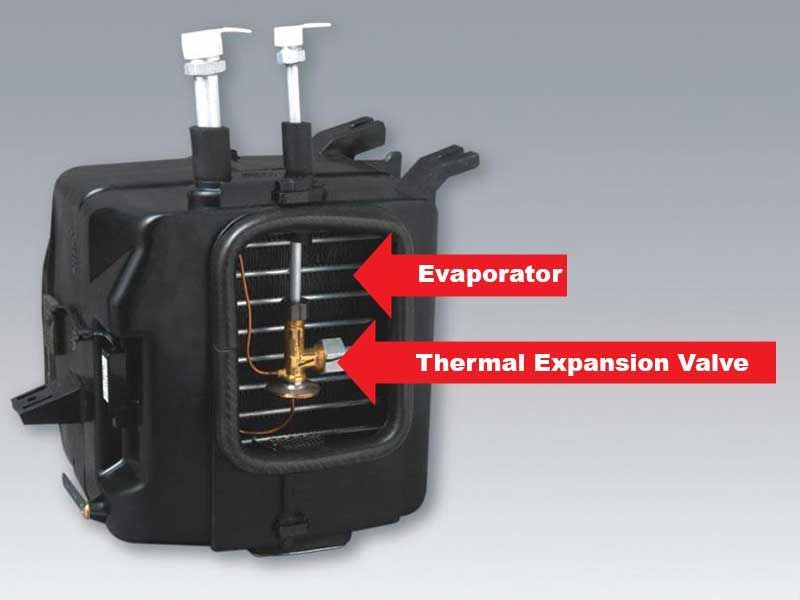Air Conditioning Low Pressure Side
FEBRUARY 15, 2016

Thermal Expansion Valve (txv):
Here, the system changes from the high-pressure side to the Air Conditioning low pressure side. This part of the system changes the air from hot to cold.
The pressurized refrigerant flows as a liquid from the receiver-dryer into the expansion valve, where it can expand. With less pressure on the refrigerant, it can move into the evaporator where valves can sense the pressure changes and regulate the flow of refrigerant. These valve changes allow the system to operate more steadily, however, parts of the Thermal Expansion Valve can wear out and may need to be replaced sometimes.
Orifice Tube:
Some cars use an orifice tube instead of an expansion valve, but they both allow the refrigerant to expand with lower pressure before the liquid goes into the evaporator. The orifice tube keeps the refrigerant flowing at a constant rate without moving valves, but it can get clogged over time. Systems like this turn the AC system on and off automatically to regulate the flow of refrigerant to the evaporator.

Standard air conditioning low pressure side evaporator and TXV in housing.
Evaporator:
Unlike the other parts which are located in the engine compartment, this one is in the cabin, typically on the passenger side above the footwell. With its radiator-like coil of tubes and fins, the evaporator works by absorbing heat rather than dissipating it.
When the cold, low-pressure liquid refrigerant enters the evaporator coil, its temperature is a chilly 32 degrees Fahrenheit (0 degrees Celsius), which is why there shouldn’t be any water in the system: it will freeze! The refrigerant (R-134a) has a much lower freezing (and boiling) temperature. The heat in the car cabin, in fact, is enough to make the liquid refrigerant boil and turn into a gas again, just like water changing into steam. As a gas, it can absorb a lot more heat, too.
As the gas travels out of the evaporator, it leaves the heat behind and a fan blasts the cool air into the passenger area. While in gas form, the refrigerant returns to the compressor, where it can be pressurized and the “closed loop” begins again.
Accumulator:
If the system has an orifice tube, there will be an accumulator between the evaporator and the compressor. When too much refrigerant enters the evaporator, it doesn’t all boil. And since the compressor can only compress gas (not liquids), the accumulator traps extra liquid so it doesn’t get into the compressor.

Standard air conditioning low pressure side accumulator
The evaporator also removes humidity from the air in the vehicle, which also makes it feel cooler. Water, dirty, and sometimes pollen condense on the coil of the evaporator. When you stop your vehicle and spot water dripping down, it’s most likely the water from the AC evaporator. No need to worry!
Find out more about your air conditioning system:
- Air Conditioning Repair Service
- Recharging A/C
- How you recharge your A/C system
- Automotive Filters
- Air Conditioning System in Automobiles
More Services we offer:
Loading ...
Missing business hours data / Error occurred while getting the data.
Our Location
Have Trouble Finding Us?
Loading ...
Missing nap lines data / Error occured while getting the data.
